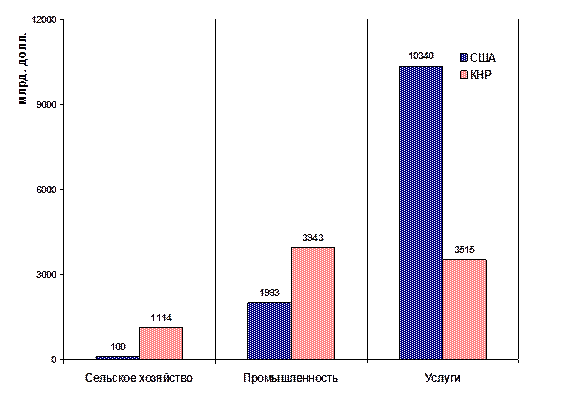What is welding and what do welders do?
Сold welding
Cold welding, the joining of materials without the use of heat, can be
accomplished simply by pressing them together. Surfaces have to be well
prepared, and pressure sufficient to produce 35 to 90 percent deformation at
the joint is necessary, depending on the material. Lapped joints in sheets and
cold- butt welding of wires constitute the major applications of this
technique. Pressure can be applied by punch presses, rolling stands, or
pneumatic tooling. Pressures of 1,400,000 to 2,800,000 kilopascals (200,000
to 400,000 pounds per square inch) are needed to produce a joint in
aluminum; almost all other metals need higher pressures.
Friction welding
In friction welding two work pieces are brought together under load
with one part rapidly revolving. Frictional heat is developed at the interface
until the material becomes plastic, at which time the rotation is stopped and
the load is increased to consolidate the joint. A strong joint results with the
plastic deformation, and in this sense the process may be considered a
variation of pressure welding. The process is self-regulating, for, as the
temperature at the joint rises, the friction coefficient is reduced and
overheating cannot occur. The machines are almost like lathes in appearance.
Speed, force, and time are the main variables. The process has been
automated for the production of axle casings in the automotive industry.
Laser welding
Laser welding is accomplished when the light energy emitted from a
laser source focused upon a work-piece to fuse materials together. The limited availability of lasers of sufficient power for most welding purposes
has so far restricted its use in this area. Another difficulty is that the speed
and the thickness that can be welded are controlled not so much by power but
by the thermal conductivity of the metals and by the avoidance of metal
vaporization at the surface. Particular applications of the process with very
thin materials up to 0.5 mm (0.02 inch) have, however, been very successful.
The process is useful in the joining of miniaturized electrical circuitry.
Diffusion bonding
This type of bonding relies on the effect of applied pressure at an
elevated temperature for an appreciable period of time. Generally, the
pressure applied must be less than that necessary to cause 5 percent
deformation so that the process can be applied to finished machine parts. The
process has been used most extensively in the aerospace industries for joining
materials and shapes that otherwise could not be made—for example,
multiple- fin ned channels and honeycomb construction. Steel can be
diffusion bonded at above 1,000 ° C (1,800 ° F) in a few minutes.
Ultrasonic welding
Ultrasonic joining is achieved by clamping the two pieces to be welded
between an anvil and a vibrating probe or sonotrode. The vibration raises the
temperature at the interface and produces the weld. The main variables are
the clamping force, power input, and welding time. A weld can be made in
0.005 second on thin wires and up to 1 second with material 1.3 mm (0.05
inch) thick. Spot welds and continuous seam welds are made with good reliability.
Unit 3.
Power Supplies
To supply the electrical energy
necessary for arc welding processes, a
number of different power supplies can be
used. The most common classification is
constant current power supplies and
constant voltage power supplies. In arc
welding, the voltage is directly related to
the length of the arc, and the current is
related to the amount of heat input.
Constant current power supplies are most
often used for manual welding processes
such as gas tungsten arc welding and shielded metal arc welding, because
they maintain a relatively constant current even as the voltage varies. This is
important because in manual welding, it can be difficult to hold the electrode
perfectly steady, and as a result, the arc length and thus voltage tend to
fluctuate. Constant voltage power supplies hold the voltage constant and vary
the current, and as a result, are most often used for automated welding
processes such as gas metal arc welding, flux cored arc welding, and
submerged arc welding. In these processes, arc length is kept constant, since
any fluctuation in the distance between the wire and the base material is
quickly rectified by a large change in current. For example, if the wire and
the base material get too close, the current will rapidly increase, which in turn
causes the heat to increase and the tip of the wire to melt, returning it to its
original separation distance.
The type of current used in arc welding also plays an important role in
welding. Consumable electrode processes such as shielded metal arc welding
and gas metal arc welding generally use direct current, but the electrode can
be charged either positively or negatively. In welding, the positively charged
anode will have a greater heat concentration, and as a result, changing the
polarity of the electrode has an impact on weld properties. If the electrode is
positively charged, it will melt more quickly, increasing weld penetration and
welding speed. Alternatively, a negatively charged electrode results in more
shallow welds. Non-consumable electrode processes, such as gas tungsten arc
welding, can use either type of direct current, as well as alternating current.
However, with direct current, because the electrode only creates the arc and
does not provide filler material, a positively charged electrode causes shallow
welds, while a negatively charged electrode makes deeper welds. Alternating
current rapidly moves between these two, resulting in medium-penetration
welds. One disadvantage of AC, the fact that the arc must be re-ignited after
every zero crossing, has been addressed with the invention of special power
units that produce a square wave pattern instead of the normal sine wave,
making rapid zero crossings possible and minimizing the effects of the
problem.
2 Consumable Electrode welding is shielded metal arc welding
(SMAW), which is also known as
manual metal arc welding (MMA) or
stick welding. Electric current is used to
strike an arc between the base material
and consumable electrode rod, which is
made of steel and is covered with a flux that protects the weld area from
oxidation and contamination by producing CO2 gas during the welding
process. The electrode core itself acts as filler material, making a separate
filler unnecessary. The process is very versatile, requiring little operator
training and inexpensive equipment. However, weld times are rather slow,
since the consumable electrodes must be frequently replaced and because
slag, the residue from the flux, must be chipped away after welding.
Furthermore, the process is generally limited to welding ferrous materials,
though special electrodes have made possible the welding of cast iron, nickel,
aluminum, copper, and other metals. The versatility of the method makes it
popular in a number of applications, including repair work and construction.
Gas metal arc welding (GMAW), also known as metal inert gas (MIG)
welding, is a semi-automatic or automatic welding process that uses a
continuous wire feed as an electrode and an inert or semi-inert gas mixture to
protect the weld from contamination. Since the electrode is continuous,
welding speeds are greater for GMAW than for SMAW. However, because
of the additional equipment, the process is less portable and versatile, but still
useful for industrial applications. The process can be applied to a wide
variety of metals, both ferrous and non-ferrous. A related process, flux-cored
arc welding (FCAW), uses similar equipment but uses wire consisting of a
steel electrode surrounding a powder fill material. This cored wire is more
expensive than the standard solid wire and can generate fumes and/or slag,
but it permits higher welding speed and greater metal penetration.
Submerged arc welding (SAW) is a high-productivity welding method
in which the arc is struck beneath a covering layer of flux. This increases arc
quality, since contaminants in the atmosphere are blocked by the flux. The
slag that forms on the weld generally comes off by itself, and combined with
the use of a continuous wire feed, the weld deposition rate is high. Working
conditions are much improved over other arc welding processes, since the
flux hides the arc and no smoke is produced. The process is commonly used
in industry, especially for large products.
3 Non-Consumable Electrode Methods
Gas tungsten arc welding (GTAW),






